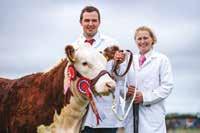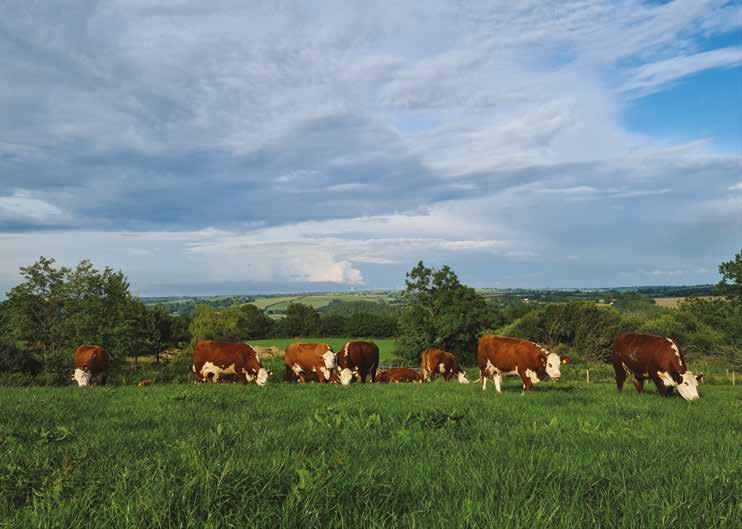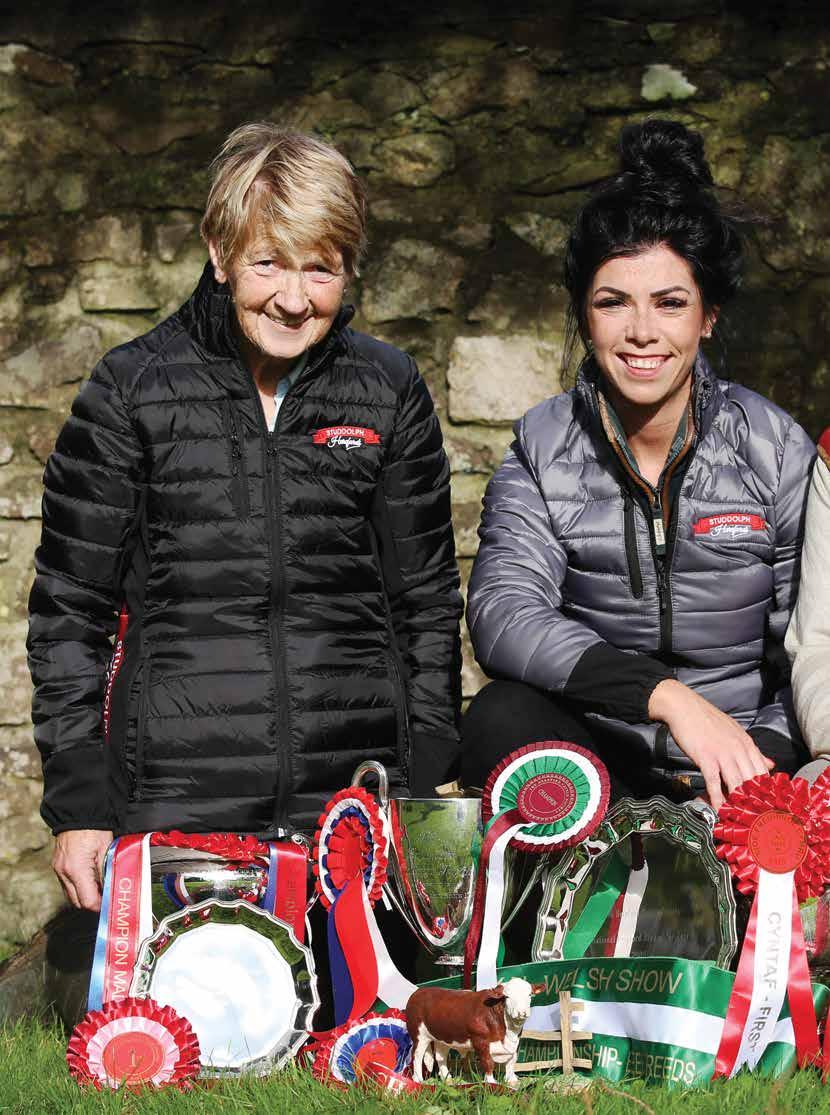
10 minute read
National Herd of the Year win for Thorne family
Thornes win Herd of the Year
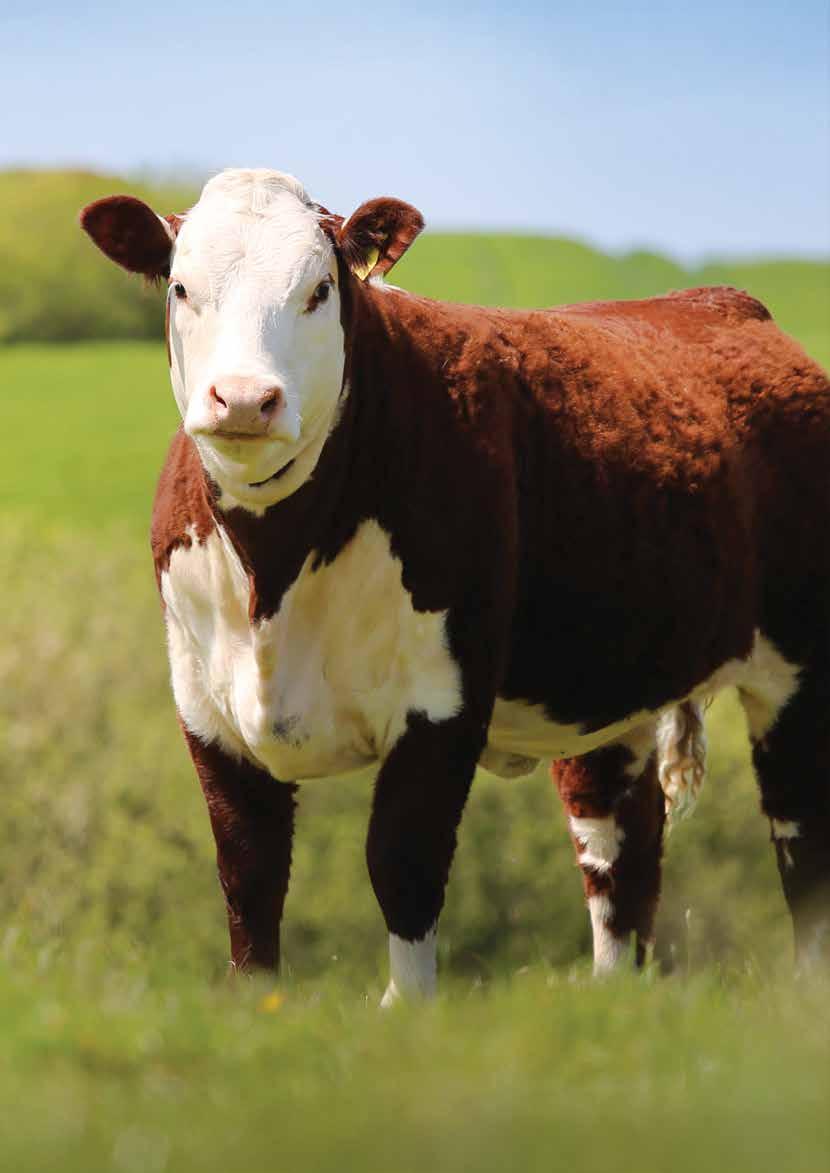
Thornes win Herd of the Year
As the Thorne family reflects on what can only be described as a ‘year they’ll never forget’, George, Ionwy and Non look back at their successes in 2021, and over time.
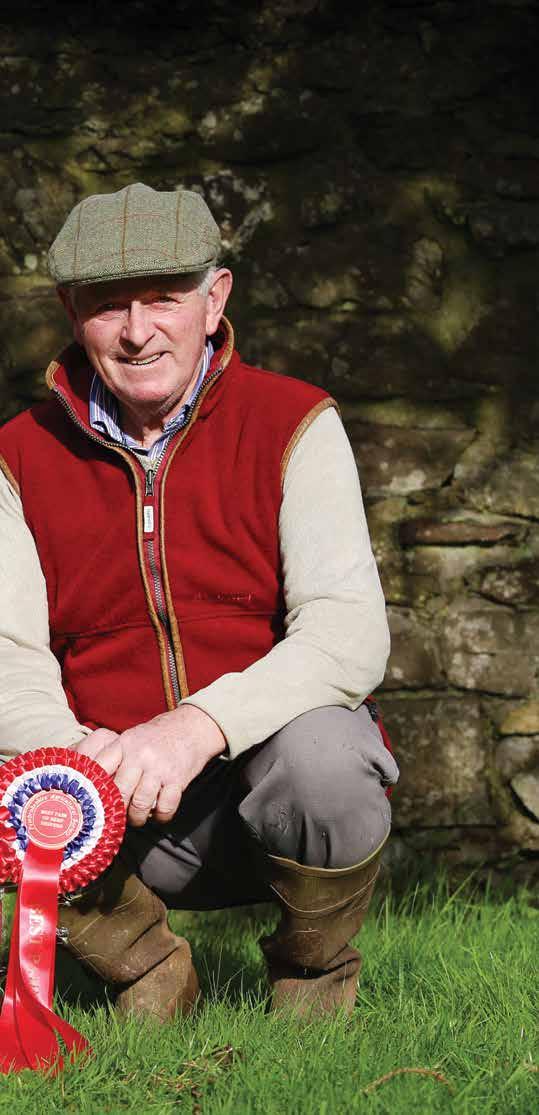
Looking back on the past 75 years of breeding Hereford cattle, both horned and poll, George Thorne, his wife Ionwy and daughter Non can’t quite believe the year they have had. With a successful return to the sale ring after 40 years of not selling females at a society sale, a welcome return to a show season, a number of exciting private sales and being crowned National Herd of the Year, the family has certainly worked hard to put the Hereford breed on the map, not only in Wales, but throughout the UK. Farming what George describes humbly as a ‘45-cow, small grass farm’ at Milford Haven in Pembrokeshire, it’s pretty clear that Hereford cattle run through the veins of this family. Admitting that even in the darker times of livestock farming, George has never wavered from breeding Herefords and has remained true to his family’s passion for the breed. The herd, which was established in 1946 by George’s father Walter, ran then under three inclusive prefixes – the Studdolph horned herd, the Ashdale British Polled herd and the Glenvale poll herd. Prior to the growth of the Hereford herd, Dairy Shorthorns were in residence at Studdolph Hall Farm, but the few early Hereford purchases soon grew and by the early 1960s reached 80 cows, making it one of the largest horned herds in the UK.
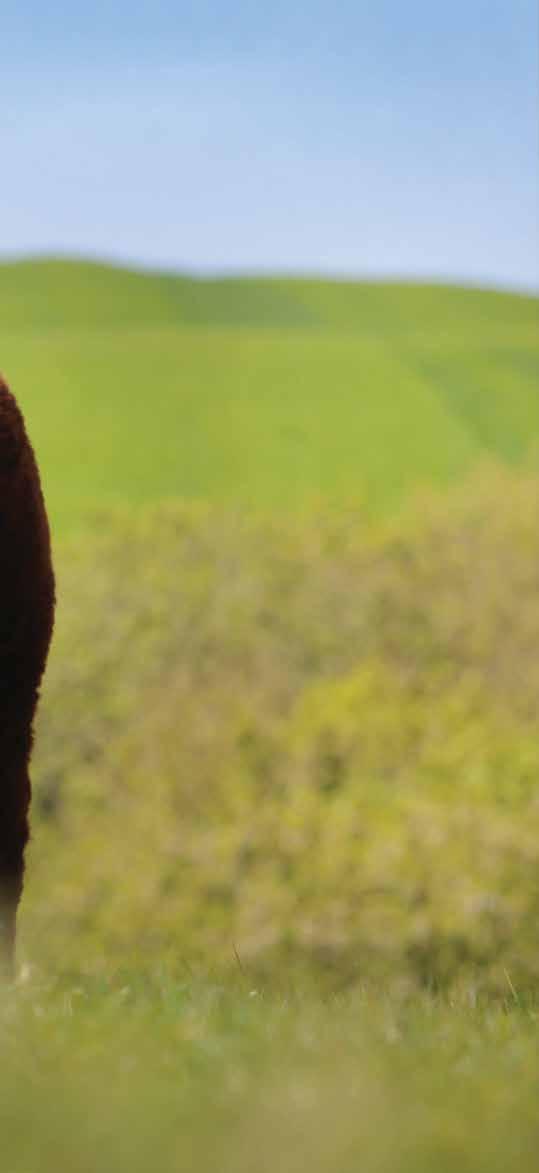
But in 1979, George’s father made the decision to disperse the Hereford herds. A changing attitude to beef production due to the popularity of continental breeds, coupled with a diminished demand for the horned Hereford meant a change in focus was required. However, in a bid to keep the bloodlines alive, George bought a cow and an in-calf heifer back out of the sale for himself.
“The cow was purchased in-calf to a British Polled bull which in turn established our successful Queen family,” recalls George. The herd then grew through the 1990s with the purchase of poll females from the Dendor, Costhorpe, Mandalay and Lowesmoor herds.”
George admits there was never any doubt in his mind as to whether he’d carry on with the breed. After all, he is an avid Hereford fan and at just four years old proudly paraded his red and white painted sock lamb to give his father a run for his money on an on-farm viewing day.

“I simply had to get in on the action,” highlights George with a wry smile on his face.
Anyone who has visited the Studdolph herd over the years, as well as recently, will know it certainly carries a stamp, with a focus on long cows with great udders, plenty of milk and natural flesh through the second thigh. Stock bull, Vexour 1 Palmer
producing a cow Ashdale 3 Queen F2, which calved at 18 months old and then went on to have 12 calves before leaving the farm at 18 years of age. The Queen family, one of Non’s favourites, also goes back to Jonathan Fox.
Over the years the family has had many successes with various stock bulls. Having widely used AI in the early days, the first stock bull to arrive at Studdolph was Vorn 1 Jonathan Fox, by the Canadian import sire, Aqua Hollow Talent 24K. This bull was responsible for Then a real game changer for the herd arrived in the form of Bosa 1 Arnold, a bull bred by Gerald Blandford.
“He had tremendous depth and a great body and was incredibly well respected by fellow breeders and continental breeders alike when he represented the breed on the society stand at Beef Expo at Malvern,” explains George. Arnold also went on to win the interbreed title at Pembrokeshire Show.
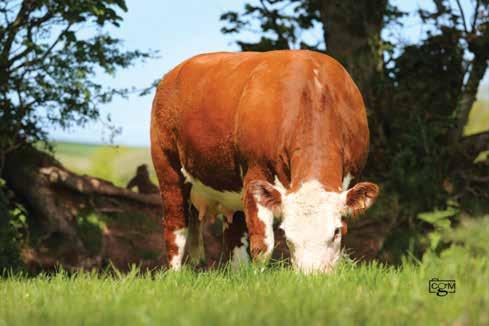
Another quality female producing giant of the herd was Weybrook 1 Duke and again a former interbreed winner at Pembrokeshire Show. Having been tapped out by judge Roger Birch, he commented in the ring when giving his reasons: “That bull can move, he left the rest standing.” Next up and still hitting the headlines at the moment is Lowesmoor 1 Nasser.
“Non and I went to the Three Counties Show on the lookout for a bull and we both agreed on this lad,” comments George. “He’s certainly bred well for us producing three females sold privately this year.” Now leaving his mark on the herd is current senior stock sire, Vexour 1 Palmer. Purchased at a spring society sale, Palmer has bred well for the family producing some of the more recent show and sale success stories, but ultimately it is the bull’s easy temperament that is one of his most loved characteristics.
Strong family lines are something that the family strives for and there’s no doubting there are some key influencers in the herd, including the Angelas, Kylies, Doris, Saras, Queens and of course the Pollys which have hit the headlines this year at both shows and sales. The quality
of these girls helped to give the Thorne family its first National Herd of the Year title in 2008.
“It’s often the Ashdale British Polled females that catch the eye of those visiting the herd,” explains Non. Commenting on the difference behind the prefixes she says the Ashdale British Polled herd represents 20 per cent of the overall herd size with that extra thickness and second thigh, something the commercial man often remarks on when purchasing bulls privately at home. Explaining the origins of the British Polled genetics, George says the first British Polled animal was born in spring 1951 as a result of one Galloway bull put to a number of Hereford cows.
“Interestingly, if this is the case our British Polled cattle have fantastic hair and a little attitude, so who knows that could just be the Galloway influence coming through even after all those years.” The Studdolph herd now resides under the ownership of Non and was gifted to her once the last of the original Studdolph horned females died out along with the purchase of two females from the Dendor herd as a Christmas present. And it is Non’s enthusiasm, drive and passion for the breed that saw a return to the sale ring after 40 years of not selling females at a public auction. “We felt that while we had a strong commercial audience at home, it was time to offer a few select jewels in the crown at public auction,” she says. So, April 2021 saw the start of the family’s year to remember with the sale of two heifers from the Polly family at 5,200gns and 4,600gns. The Polly family then picked up class winning rosettes at the National Poll Show. referee and recently established Hereford breeder, Nigel Owens, as well as the sale of a heifer from the Barbie family to Inverness-based Calum Smith and partner Anna Wilson. This stylish girl then flew the flag for Studdolph breeding at the National Poll Show, picking up the reserve breed championship ribbons.
“It’s fantastic to do well with your own genetics at shows and sales, but any breeder will admit it’s even better to watch other breeders do well with your genetics,” reckons George. However, the icing on the cake for the family without doubt is being crowned the National Herd of the Year title having come through as Welsh herd of the year. This accolade is a huge honour for the family, particularly as the overall final was judged by Pat Stanley of the noted Blackbrook Longhorn herd. The family admit they were shocked to come third in 2006, so much so that Ionwy and Non went to the dinner as a mark of respect for winning the Welsh region, but they were over the moon to be called out as third in the final. “They called me late at night with the results. I was that happy I felt like jumping out of bed and getting in the car to join them,” comments George.
Two years later in 2008 the family won the award, again to the family's shock and then were runners up in 2010.

“This year it meant even more. We never thought with the quality in the running we would stand a chance,” he adds.
Outside of competitions and sale ring success, Non is now following in her father and grandfather’s footsteps as a Hereford council member. Alongside her fulltime role as an agricultural consultant for Brown and Co, the passion she has for the breed certainly follows in her family’s footsteps.
“It’s important to bring a younger perspective to council meetings as well as fly the flag for the Welsh region,” comments Non, who is now in her second term on council and is the youngest ever female council member, although she has many years ahead of her to match the 30 years served by her grandfather and 33 years by her father.
Non is also proving her worth as a judge on the show circuit having gained experience at the Agri Expo calf show in Carlisle and the Irish Calf Show at Tullamore, as well as a stint in Finland.
George also reflects on the pleasure he has gained from stepping in a judging ring with one of his top highlights being asked to judge the National Horned Show in 2003, the year he was society president.
The whole of Studdolph Hall Farm is down to grass

“With 130 cattle forward for judging, I was the first Welsh or English judge to be asked, with the task usually falling to an international judge,” he explains. “I also had the honour of judging the National Herd of the Year Competition in 2016 which proved to be a thoroughly rewarding experience getting to see the best of the herds in the UK,” he adds.
Along with judging in the UK, George has travelled to various parts of the globe for his Hereford passion. “In the early days exporting Hereford cattle was the norm and I was fortunate to travel to South Africa twice, even on Christmas Day on one occasion. Ionwy and I have also been fortunate to make many friends and acquaintances through this wonderful breed as well as some hilarious memories, some of which you couldn’t possibly print,” he laughs.
Looking to the future, the family are already busy planning next year’s sale offerings and possible show teams, but still remain modest and humble with regard their recent accolades. But with the Welsh routes remaining strong, Non admits ‘a cheeky breed championship win at the Royal Welsh’ would certainly create the need for another memorable Thorne family Hereford party.
Farm facts
• 69 hectares (170 acres)
• 45 breeding cows • Operating under the Studdolph poll,
Glenvale poll and Ashdale British
Polled prefixes • Vexour 1 Palmer – current stock bull
• 2021 National Herd of the Year winners
Cow families at Studdolph Hall
• Angela • Kylie • Doris • Sara • Queen • Polly

Functional fertile Bulls and Heifers Guaranteed Breedplan Performance Recorded HiHealth herdcare • Cattle Health Scheme
